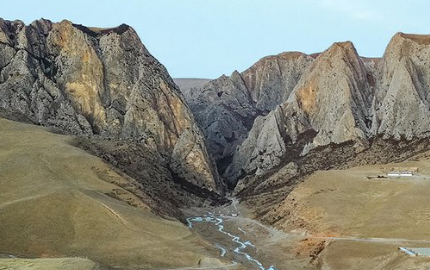Humanity is not the sole proprietorship of our present day human race. Many other human races existed and either fought it out or evolved into what we are now.
New research has deepened our understanding of Denisovans, an ancient human species, who thrived on the high-altitude Tibetan plateau for over 100,000 years. Discovered in 2010, Denisovans were first identified through DNA analysis of a finger bone fragment. Since then, significant Denisovan fossils have been scarce, but recent findings at Baishiya Karst Cave in China’s Gansu province have shed more light on their existence and lifestyle.
Ancient Denisovans hunted snow leopards on the Tibetan plateau
Snow leopards were among the animals hunted by DenisovansKlaus Honal / Alamy
…#Science @qnewshub @qnewscrunchhttps://t.co/Cgq45aFS7a— QNewsHub (@qnewshub) July 4, 2024
At 3,280 meters above sea level, the Baishiya Karst Cave has become a crucial site for Denisovan research. Here, researchers unearthed thousands of animal bone fragments, revealing that Denisovans were adept hunters who processed a wide range of animals, from woolly rhinos to birds. This suggests that they had a flexible diet which allowed them to adapt to one of Earth’s most extreme environments through both warmer and colder periods.
Wow! >160,000 years ago Denisovans lived on the Tibetan Plateau, 10,700 feet up, where the oxygen is thin and the climate cold and dry. They appear to have eaten blue sheep and snow leopards and survived for 100,000 years during the Ice Age. How? https://t.co/HjgcJK2nm0
— Michael Platt (@MichaelLouisPl1) July 4, 2024
The most recent discovery from the cave is a rib bone fragment dating back between 48,000 and 32,000 years, making it the youngest Denisovan fossil found to date. This finding is pivotal as it suggests that Denisovans coexisted with modern humans who were spreading across the Eurasian continent at the time.
The study utilized a technique called Zooarchaeology by Mass Spectrometry (ZooMS) to analyze over 2,500 animal bone fragments that were too small to identify by sight. This method, based on differences in the amino acid sequence of collagen within the bones, helped determine the types of animals the Denisovans utilized, indicating a diverse and resourceful adaptation to their environment.
Denisovans Survived on Tibetan Plateau until 48,000-32,000 Years Ago https://t.co/hdZpK6OGaR pic.twitter.com/vChCtRNdt6
— Infyscience (@infyscience) July 4, 2024
The diverse fauna, including both large and small herbivores and carnivores like hyenas, along with evidence of cut marks on bones, suggests that the Denisovans not only hunted for meat but also processed animals for their hides and bone marrow. Some bones were even utilized as tools.
Bones found near a 40,000-year-old rib on the Tibetan Plateau suggest Denisovans hunted goats, yaks, and birds. https://t.co/20anEGloVK
— News from Science (@NewsfromScience) July 4, 2024
The findings from Baishiya Karst Cave provide compelling evidence of Denisovans’ sophisticated hunting and survival strategies, portraying them as a dominant species in their habitat. Unlike Denisova Cave in Siberia, which housed multiple human species, the Baishiya site appears to have been occupied solely by Denisovans, making it a unique study area for this mysterious group.
The research not only adds to our understanding of how Denisovans adapted to harsh climates but also opens up discussions about their interactions with contemporary modern humans. As excavations and studies continue, each new discovery at sites like Baishiya Karst Cave is a valuable piece in solving the puzzle of human evolution.
Key Points:
i. Denisovans, an ancient human species, thrived on the Tibetan plateau for over 100,000 years, as revealed by recent findings at Baishiya Karst Cave in China’s Gansu province.
ii. The cave site, sitting at 3,280 meters above sea level, provided insights into Denisovans’ diet and survival tactics through thousands of analyzed animal bone fragments, showing they hunted a diverse range of animals.
iii. A significant discovery included a rib bone fragment dated between 48,000 and 32,000 years ago, indicating Denisovans coexisted with modern humans during this period.
iv. Researchers employed Zooarchaeology by Mass Spectrometry (ZooMS) to identify small animal bone fragments, enhancing understanding of Denisovan hunting and tool-making practices.
v. The findings suggest Baishiya Karst Cave was exclusively occupied by Denisovans, unlike other sites like Denisova Cave in Siberia, highlighting its uniqueness in studying this enigmatic species.
James Kravitz – Reprinted with permission of Whatfinger News



